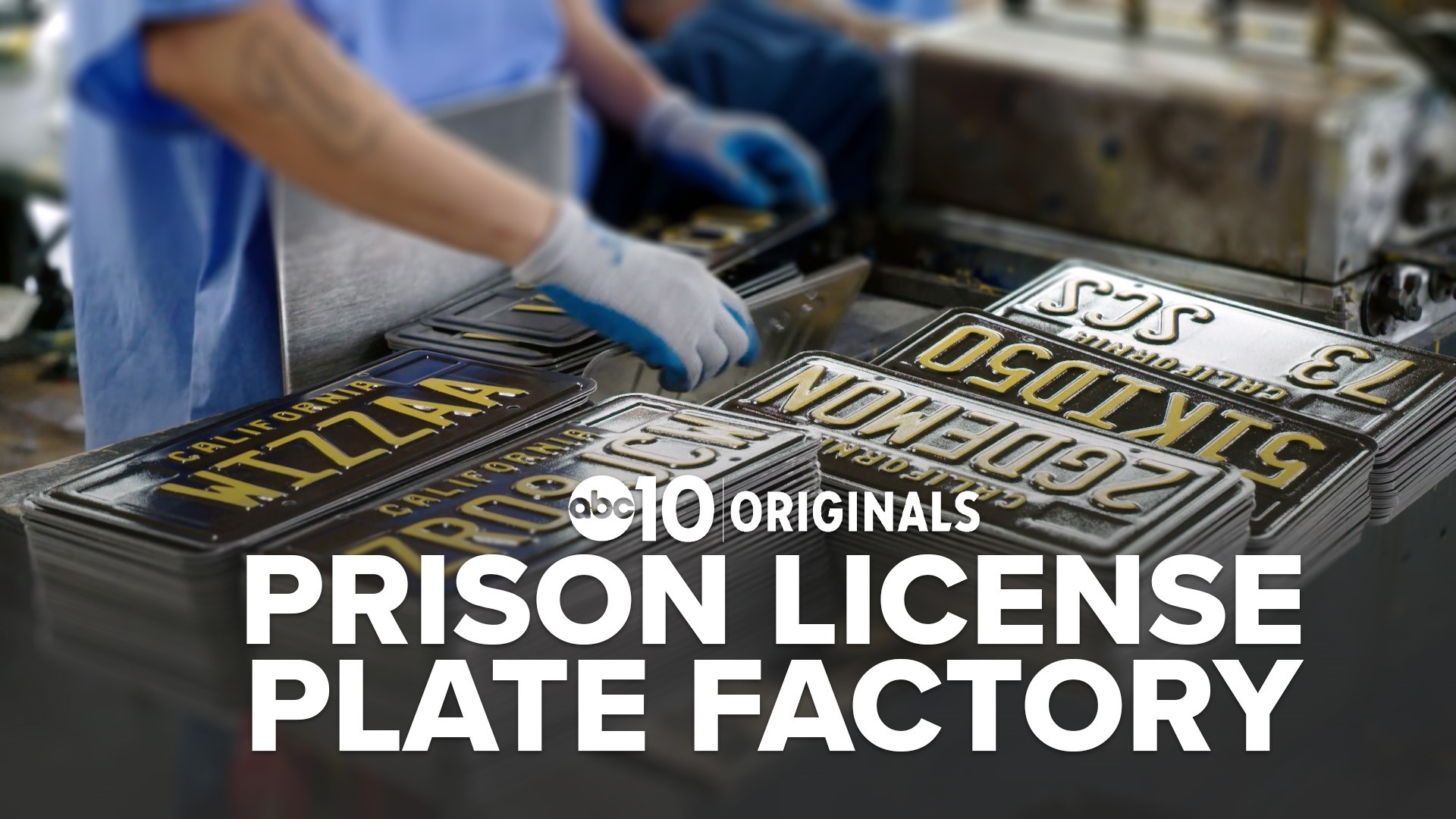FOLSOM, Calif. — California, a state famous for its highways and cars, is running out of license plate numbers.
All available sequential 7-digit number-letter combinations will be used up within the next three years.
The California Department of Motor Vehicles began using the sequence in 1980. It started out 1AAA000 and will end on 9ZZZ999. Each new plate adds a number or letter in sequential order.
As of Dec. 2023, California license plates are on the 9EWZ000 series. The Department of Motor Vehicles (DMV) told ABC10 they project the sequence will reach its end sometime in 2027. It may seem like a long time, but it's not if you consider what goes into making a license plate.
It is unclear how the dwindling license plate numbers will affect production at the prison. A statement from the California DMV said, “The DMV is still considering its options.”
Every single California license plate is made in one place: the town of Represa -- the entire town is located inside Folsom State Prison. It’s the only town of its kind in California.
“We have 41 houses on the facility. We’ve got four streets we maintain and have school buses come in and out,” said prison spokesperson Chad Deal.
Back in the early 1900s, the city of Folsom didn’t want its letters and mail to be confused with those for Folsom State Prison. The city's solution was to ask for the prison to become its own separate town. In a way the prison resembles a traditional town with homes, streets and its own workforce.
The biggest manufacturing job in Represa is making license plates. It’s a program overseen by the California Prison Industry Authority (PIA). It teaches incarcerated people job skills so they can find employment when they are released.
“They obviously are not going to get a job outside of here stamping license plates but whether it’s a manufacturing job, these skills are very transferable,” said PIA General Manager William Davidson.
Davidson says license plates have been manufactured at Folsom Prison since the late 1940s and the work is never-ending.
“They are all made here and we make about 45,000 a day. Yes, 45,000 in a typical day,” said Davidson.
It may be hard to believe the prison produces that many license plates a day, but Davidson says it accounts for all vehicles and trailers, new and used, in the state.
“It is a combination of everything. It is primarily new cars, but yes, we do replacement plates too,” said Davidson.
To make 45,000 plates a day you need a lot of metal.
“It takes about, on average, 13 rolls of aluminum each day," said Davidson. "At 800 pounds per roll, that's quite a bit of aluminum."
The rolls of aluminum are fed into several different punch and die machines and they need a lot of maintenance. Inmates not only manufacture the license plates, but they also maintain the machines.
A variety of specialty skills are taught in the prison to keep the machines running; skills like fabricating specialty parts for complex machines.
“This is the first career-type job that I’ve had since I’ve been in prison and I look forward to using these skills when I get out,” said inmate Antonio Calles.
Folsom is a transitional prison and many inmates there, like Calles, have served the majority of their time.
“When I was 14 years old, I was playing with my dad’s gun and I killed my best friend. I lied about it and I was found guilty for murder in the first degree as a result, and I’ve been here ever since,” said Calles.
Working in the license plate machine shop, along with therapy, has given Calles the skills needed to get accepted into college and a prison transitional program.
“I go to the parole board in December. If I am found suitable, I could be out around May,” said Calles.
The Folsom Prison is full of job skill training, including a world-class braille textbook program for the blind and CAD-based architectural design. A UC study shows job training through the California Prison Industry Authority significantly reduces recidivism.
“Of those who were in our program, 85% did not come back to prison,” said Davidson.
MORE FROM ABC10 ORIGINALS: Lake Tahoe's new invader: The New Zealand mudsnail. They may be tiny but these invaders could cause huge problems for Lake Tahoe.



















